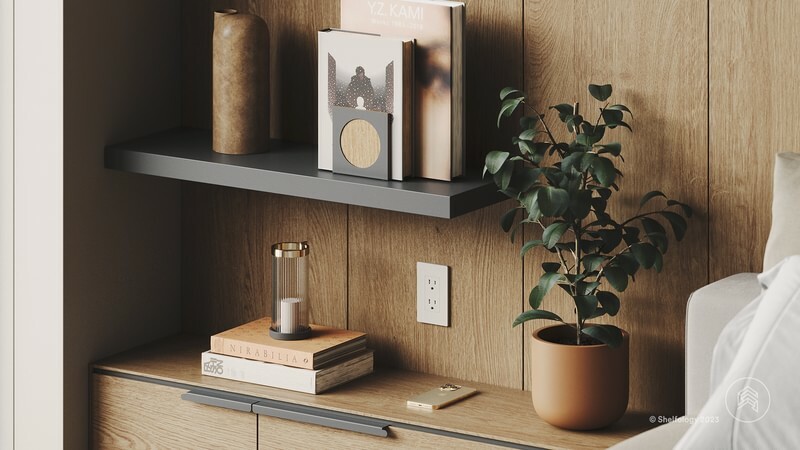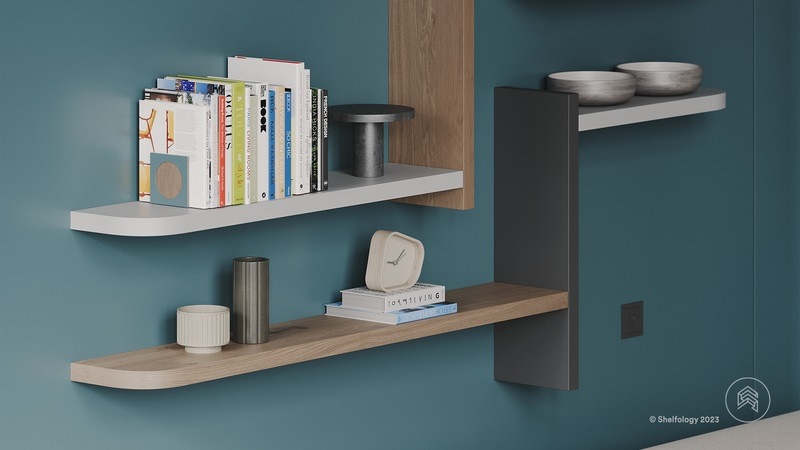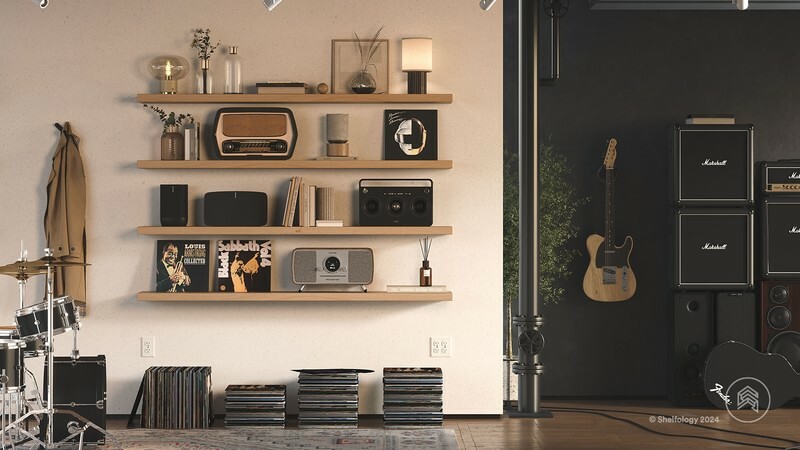According to the Anxiety and Depression Association of America, 40 million adults in the U.S. suffer from anxiety disorders. Anxiety can be clinical or brought on by life’s unexpected curveballs such as a stressful job, layoff, or what many of us experienced at the start of 2020: the global pandemic. The World Health Organization reported a 25% increase in anxiety and depression during the first year of Covid-19. So what can we do now to ease the angst?
A research study concluded that the ambiance and aesthetics of a space impact the people in it and that environmental design plays a major role in reducing stress and anxiety as well as promoting health and well-being.
Whether you or a family member has an anxiety condition, or you’re simply looking for ways to relieve stress, the following eight home decor tips can help.

Home Decor Ideas That Reduce Anxiety and Stress
-
Clear Out Clutter
A cluttered home environment can make almost anyone feel uneasy. According to Psychology Today, clutter creates excessive visual stimuli in the brain that causes stress, guilt, anxiety, and overwhelm. On the flip side, decluttering a home can provide a sense of fulfillment, accomplishment, and peace of mind. Clearing out the clutter and selling items can also put more money in your pocket. The following home decluttering tips can help you get started:
- Sort items into four piles: Do a walkthrough room by room and get rid of items you longer need or use. Don’t forget the closets. (As a rule of thumb, if you haven’t worn that outfit in a year, it’s time to toss it.) Make four piles: one for items to keep, one to donate or give away, one to discard, and one to sell. You can sell items at a garage sale and on website marketplaces such as Craigslist, eBay, Facebook Marketplace, and Poshmark.
- Sell valuables: If you have jewelry, artwork, or antiques, it’s worth getting them appraised by an antique dealer or certified appraiser to learn their value. Family collectibles you don’t wish to keep like your grandmother’s jewelry, furniture, and collectibles could fetch a nice price. You can sell these items to antique dealers, at estate sales, and at online and in-person auctions.
- Donate and give away items: Has a friend or family member been eyeing a piece of furniture you no longer want that’s taking up space? It’s time to give it away. You’ll be doing yourself and your friend a favor. Non-profit organizations will gladly pick up your donations if they’re in good condition. Some organizations include Goodwill, the Salvation Army, and Habitat for Humanity. You can find charities that collect specific items like books and art supplies.
-
Fill Your Home With Plants

Aksel LED Aksel REM Ellie Modern MinimalBedroom Day Detail Plants Houseplants invite nature indoors. But they also clean out toxins and release oxygen into the air which can improve your health. A study found that taking care of houseplants (watering, fertilizing, and nurturing plants) reduces stress and boosts one’s physiological and psychological well-being. The following five plants contain stress-relieving properties:
- Aloe plants: It’s not unusual to reach for an aloe plant leaf to relieve sunburn. But the aloe plant also purifies the air of harmful toxins and is highly active at night. Place one in your bedroom to aid sleep.
- Jasmine: Jasmine plants and flowers smell wonderful, but according to the Journal of Biological Chemistry, the scent of jasmine also has a calming effect on the nervous system that is similar to anti-anxiety medications.
- Lavender: The scent of lavender and its medicinal properties used in aromatherapy have been used to assist in treating depression and anxiety for centuries. This fragrant flower helps lower heart rate and decrease stress.
- Chamomile: The chamomile plant often used in tea as a sleep aid has relaxing and detoxifying health benefits, including helping digestion, increasing metabolism, and relieving a queasy stomach.
- Chrysanthemum: Chrysanthemums are stress-reducing plants that have been used to relieve stress and worry. These beautiful flowering plants target cortisol, a hormone that becomes active when stress in the body occurs. The chrysanthemum plant has also been known to increase metabolism.
-
Paint the Walls in Calming Hues
The colors we paint our walls have been linked to forming emotional responses. Blues and greens are calming colors that provide relief and relaxation. Think of a pastel blue sky, the blue ocean waves, or a green landscape. On the other hand, the color red evokes energy, stimulation, and even anxiety, which can be counterintuitive when you’re trying to relax. For your bedroom, make sure to paint the walls in a pastel color such as a soft blue or pale green. You might find it improves your circadian rhythm and helps you fall asleep early and sleep more peacefully during the night.
-
Decorate With Nature-inspired Artwork
From the works of Andrew Wyeth to Matisse, nature-themed artwork has inspired art lovers for centuries. A picturesque floral setting can fill a space with joy and calm while a mountain landscape can elicit solitude and tranquility. For a relaxing vibe in the living room, hang a large canvas depicting a nature scene above the sofa. On floating shelves in bedrooms and other living spaces, consider smaller framed paintings and prints to evoke a sense of calm.
-
Soothe Your Senses With Lavender
Natural healers have used the scent of lavender to lower tension and promote relaxation since ancient times. This healing herb can actually slow down your heart rate and lower blood pressure. Place lavender plants on window sills. Sprinkle flowers in your closet and dresser drawers. Place a few drops into an essential oil diffuser on a shelf to permeate the air, and in the bath for a heavenly soak.
-
Flood the Room With Sunlight
The sun is a natural mood-enhancer that induces relaxation. According to Healthline, sunlight releases serotonin, a hormone in the brain that helps you feel calmer and more focused. That’s why it’s essential to choose window treatments such as vertical blinds that allow in sunlight during the day (and a healthy dose of vitamin D). In bedrooms pair window treatments with blackout curtains or shades you can close at bedtime for a better night’s sleep and open during the day.
-
Create a Home Library

Aksel Radius Aksel Ellie Modern Living Room Teal Detail Home Library Getting lost in a good book can leave daily pressures behind, transporting you into another realm, time, and place. Do you opt for a Jane Austen novel depicting the English countryside strewn with horse-drawn carriages, wisteria vines, and stone facades? Or perhaps you prefer the American pastoral setting found in the pages of “The Poetry of Robert Frost.” No matter your reading preference, for the perfect home library, you’ll need to create the right environment that includes bookshelves, comfortable seating, decor, and of course, some great reads.
-
Embrace Natural Fibers, Throw Away Synthetics
Organic fabrics and natural materials provide a sense of warmth and comfort in a home. A soft, chunky wool blanket or alpaca throw in front of the hearth wraps you in a cocoon of cozy comfort. Natural materials such as wood invite a feeling of warmth compared to plastics and most synthetic materials with the exception of fleece which can feel cold and unnatural.
-
Heal Yourself With Music

Aksel Wail Art Gigi Room Music Whether you listen to your favorite playlists on an Amazon Echo, a turntable, a home theater system, or your Pandora app, music has the power to heal. Music can reduce cortisol, a stress-producing hormone in the body as well as lower heart rate and blood pressure. According to the UW School of Medicine and Public Health, music therapy has been used to treat anxiety in kids who suffer from PTSD and in clinical mental health hospital settings. So when you’re feeling the stress of the day, don’t forget to turn on some soft music to help take the edge off.
The colors, materials, textiles, and objects you choose to decorate your space provide more than a solution to beautify your home. They provide relaxation, calm anxiety, and promote well-being.




